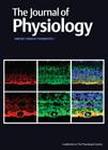版权所有:内蒙古大学图书馆 技术提供:维普资讯• 智图
内蒙古自治区呼和浩特市赛罕区大学西街235号 邮编: 010021

作者机构:Queens Univ Dept Physiol Kingston ON K7L 3N6 Canada Queens Univ Dept Anaesthesia Kingston ON K7L 3N6 Canada Queens Univ Dept Paediat Kingston ON K7L 3N6 Canada
出 版 物:《JOURNAL OF PHYSIOLOGY-LONDON》 (生理学杂志)
年 卷 期:1999年第515卷第2期
页 面:567-578页
核心收录:
学科分类:0710[理学-生物学] 1001[医学-基础医学(可授医学、理学学位)] 07[理学] 071003[理学-生理学]
主 题:动物 新生/生理学 支气管/药物作用 支气管/生理学 支气管收缩/药物作用 支气管收缩/生理学 辣椒辣素/类似物和衍生物 辣椒辣素/拮抗剂和抑制剂 辣椒辣素/药理学 乳酸/拮抗剂和抑制剂 乳酸/药理学 肺/药物作用 肺/生理学 肺顺应性/药物作用 神经纤维/药物作用 神经纤维/生理学 受体 药物/药物作用 受体 药物/生理学 反射/药物作用 反射/生理学 动物 狗
摘 要:1. Capsaicin activation of the pulmonary C fibre vanilloid receptor (VR1) evokes the pulmonary chemoreflex and reflex bronchoconstriction. among potential endogenous ligands of C fibre afferents, lactic acid has been suggested as a promising candidate. We tested the hypotheses that (a) lactic acid behaves as a stimulant of C fibre receptors in the newborn dog to cause reflex bronchoconstriction, and (b) lactic acid causes reflex bronchoconstriction via the same pulmonary C fibre receptor mechanism as capsaicin using the competitive capsaicin/VR1 receptor antagonist capsazepine. 2. night heart injection of lactic acid caused a significant increase (47 +/- 8.0%) in lung resistance (R-L) that was atropine sensitive (reduced by 75%;P 0.05), consistent with reflex activation of muscarinic efferents by stimulation of C fibre afferents. 3. Infusion of the competitive capsaicin antagonist capsazepine caused an 80% reduction (P 0.01) in the control bronchoconstrictor response (41 +/- 8.5% increase in R-L) to right heart injections of capsaicin. The effects of capsazepine are consistent with reversible blockade of the VR1 receptor to abolish C fibre-mediated reflex bronchoconstriction. 4. Lactic acid-evoked increases in R-L were unaffected by VR1 blockade with capsazepine, consistent with a separate lactic acid-induced reflex mechanism. 5. We conclude that (a) putative stimulation of C fibres with lactic acid causes reflex bronchoconstriction in the newborn dog, (b) capsazepine reversibly antagonizes reflex bronchoconstriction elicited by right heart injection of capsaicin, presumably by attenuating capsaicin-induced activation of the C fibre capsaicin receptor (VR1), and (c) capsazepine resistance of lactic acid-induced bronchoconstriction indicates that lactic acid evokes reflex bronchoconstriction by a separate mechanism, possibly via the acid-sensing ionic channel.